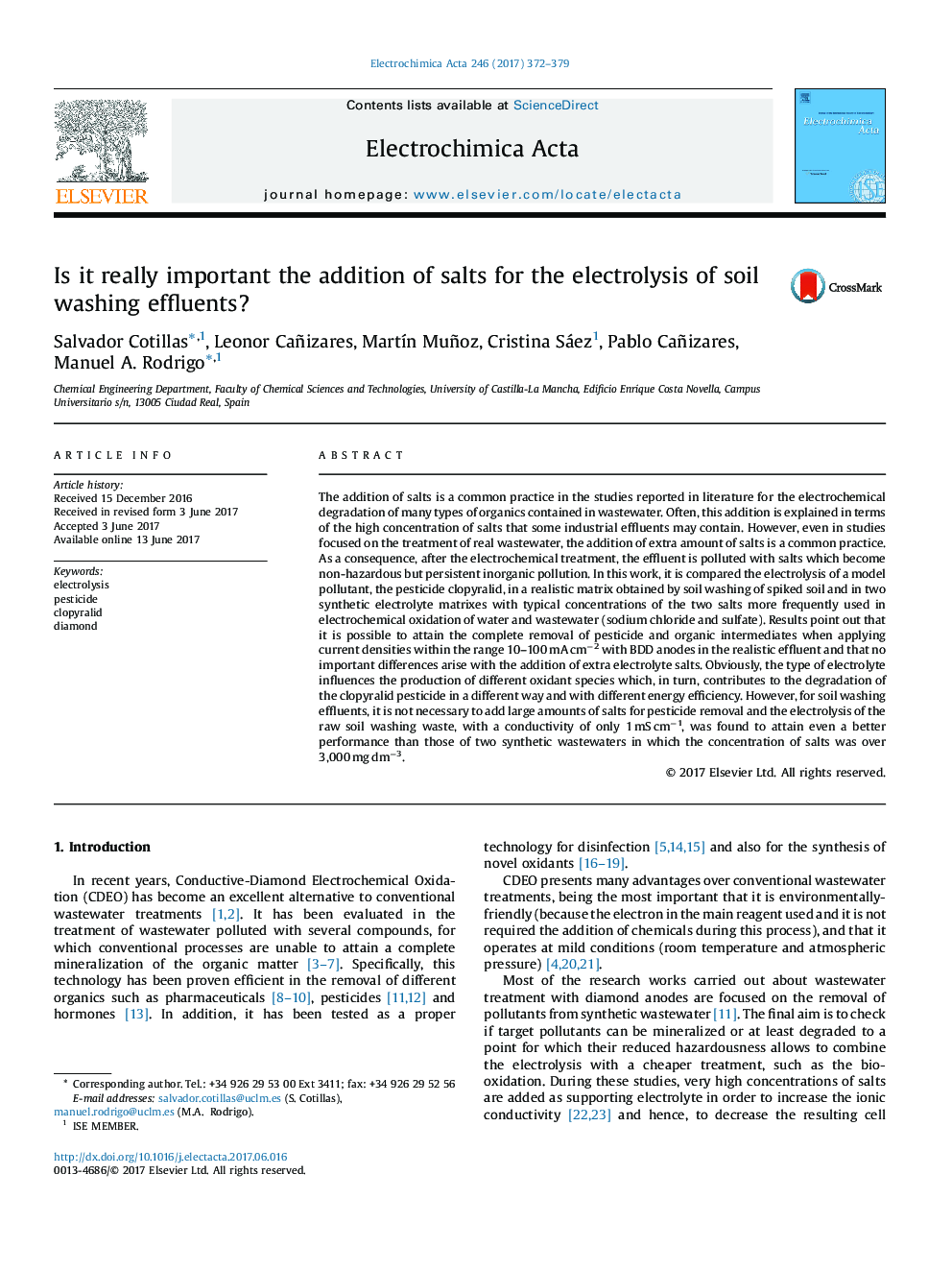| Article ID | Journal | Published Year | Pages | File Type |
|---|---|---|---|---|
| 6470478 | Electrochimica Acta | 2017 | 8 Pages |
â¢Clopyralid can be removed from soil washing effluents by electrolysis with diamond anodes.â¢A higher salt concentration does not necessarily mean better performance of electrolysis.â¢Energy cost increases dramatically with operation current density.â¢Better efficiencies reached with low concentration of various oxidants than with large concentrations of a single oxidant
The addition of salts is a common practice in the studies reported in literature for the electrochemical degradation of many types of organics contained in wastewater. Often, this addition is explained in terms of the high concentration of salts that some industrial effluents may contain. However, even in studies focused on the treatment of real wastewater, the addition of extra amount of salts is a common practice. As a consequence, after the electrochemical treatment, the effluent is polluted with salts which become non-hazardous but persistent inorganic pollution. In this work, it is compared the electrolysis of a model pollutant, the pesticide clopyralid, in a realistic matrix obtained by soil washing of spiked soil and in two synthetic electrolyte matrixes with typical concentrations of the two salts more frequently used in electrochemical oxidation of water and wastewater (sodium chloride and sulfate). Results point out that it is possible to attain the complete removal of pesticide and organic intermediates when applying current densities within the range 10-100 mA cmâ2 with BDD anodes in the realistic effluent and that no important differences arise with the addition of extra electrolyte salts. Obviously, the type of electrolyte influences the production of different oxidant species which, in turn, contributes to the degradation of the clopyralid pesticide in a different way and with different energy efficiency. However, for soil washing effluents, it is not necessary to add large amounts of salts for pesticide removal and the electrolysis of the raw soil washing waste, with a conductivity of only 1 mS cmâ1, was found to attain even a better performance than those of two synthetic wastewaters in which the concentration of salts was over 3,000 mg dmâ3.
